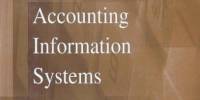Introduction
Various approaches have applied over time to the formulation of an accounting formulation theory. Some of these approaches are known as “traditional” approaches, because they are characterized by the absence of a vigorous process of verification in the attempt to develop an accounting theory. Traditional approaches constitute conventional research rather than new streams of research that rely on traditional reasoning to formulate a conceptual accounting framework. Among these approaches we may distinguish:
- the non-theoretical approaches;
- the deductive approach;
- the inductive approach;
- the ethical approach;
- the sociological approach, and
- the economic approach.
In this assignment, each of these approaches is examined in terms of its contribution to the accounting formulation theory and in terms of its relative advantages for accounting the differences theory construction and verification the nature of an accounting formulation theory and methodologies for the formulation of an accounting theory.
The nature of accounting: various images:
The Committee on Terminology of the American Institute of Certified Public Accountants originally defined accounting as follows:
- Accounting is the art of recording classifying and summarizing in a significant manner and in terms of money transactions and events which are in part at least of a financial character and interpreting the results thereof.
More recently, accounting has been defined with reference to the concept of information:
- Accounting is a service activity. Its function is to provide quantitative information, primarily financial in nature, about economic decisions, in making reasoned choices among courses of action.
These definitions refer to accounting as either an “art” or a “service activity” and imply that accounting encompasses a body of techniques that is deemed useful for certain fields. The Handbook of Accounting identifies the following fields in which accounting is useful: financial reporting; tax determination and planning; independent audits: date processing and information systems; cost and management accounting national income accounting and management consulting.
Accountants draw on different images of the accounting process to elaborate different accounting formulation theory. Before examining the traditional approaches to the accounting formulation theory, it would be useful to examine some of the images that have shaped developments in financial accounting. These images are accounting as a language, accounting as a historical record, accounting as a current economic reality, accounting as an information system, accounting as a commodity and finally accounting as an ideology.
Accounting as an ideology:
Ideologies are world views which, despite their partial and possible crucial insights, prevent us from understanding the society in which we live and the possibility of changing it. They are world views correspond to the standpoint of classes.
Accounting has been perceived as an ideological phenomenon- as a means of sustaining and legitimizing the current social, economic and political arrangements. Karl Marx maintained that accounting perpetrates a form of false consciousness and provides a means for mystifying rather than revealing the true nature of the social relationships that form productive endeavor. Accounting has also been perceived as a myth, symbol, and ritual that permits the creation of a symbolic order within which social agents can interact. Both perceptions are also embodied in the prevalent view of accounting as an instrument of economic rationality and as a tool of a capitalistic system.
The perception of accounting as an instrument of economic rationality is best exemplified by Weber, who defines the formal rationality of economic action as “the extent of quantitative calculation or accounting which is technically possible and which is actually applied”. The same point is emphasized well by Heilbroner when he states that:
Capitalist practice turns the unit of money in a tool of rational cost-profit calculations, of which the towering monument is double-entry bookkeeping primarily the product of the evolution of economic rationality; the cost-profit calculus, in turn reacts on that rationality by crystallizing and defining numerically, it powerfully propels the logic of enterprise.
Accounting as a language:
Accounting has been perceived as the Ianguage of business. It is one means of communicating information about a business.
The perception of accounting as a language is emphasized in most popular accounting textbooks. For example, Ijiri contends that:
As the language of business, accounting has many things in common with other languages. The various business activities of a firm are reported in accounting statements using accounting language, just as news events are reported in newspapers in the English language. To express an event in accounting not only does one nm the risk of being misunderstood but also risks a penalty for misrepresentation, lying or perjury. Comparability of statements is essential to the effective functioning of a language whether it is in English or in Accounting. At the same time, language has to be flexible to adapt to a changing environment.
What makes accounting a language? To answer this question, let us look at the potential parallels between accounting and language. 1-lawes defines a language as follows:
Man’s symbols are not randomly arranged signs which lead to the conceptualization of isolated and discrete referents. Rather, man’s symbols are arranged in a systematic or patterned fashion with certain rules governing their usage. This arrangement of symbols is called a language, and the rules which influence the patterning and usage of the symbols constitute the grammar of the language.
This definition and others indicate that there are two components of a language, namely symbols and grammatical rules. Thus, the recognition of accounting as a language rests on the identification of these two components as the two levels of accounting it may be argued as follows:
- The symbols or lexical characteristics of a language are the “meaningful” units or words identifiable in any language. These symbols are linguistic objects used to identify particular concepts. Symbolic representations do exist in accounting. Fur example, McDonald identifies numerals and words and debits and credits as the only symbols accepted and unique to the accounting discipline.”
- The grammatical rules of a language refer to the syntactic arrangements in any give language. In accounting, grammatical rules refer to the general set of procedures used that are followed to create all financial data for the business. Jam establishes the following parallel between grammatical rules and accounting rules:
The CPA (the expert in accounting) certifies the correctness of the application of rules as does an accomplished speaker of a language for the grammatical correctness, of the sentence. Accounting rules formalize the inherent structure of a natural language.
Accounting as a historical record:
Generally, accounting has been viewed as a means of providing the history’ of’ an organization and its transactions with its environment. For either the owner or the shareholders of a company, accounting records provide a history of the manager’s stewardship of the owner’s resources. The stewardship concept is basically a feature of the principal agent relationship, whereby the agent is assumed to safeguard the resources of the principal. The measuring of the stewardship concept ha evolved over time. Birnberg distinguishes between four periods:
1 The pure custodial period.
2 The traditional custodial period.
3 The asset-utilization period.
4 The open-ended period.
The first two periods refer to the need for the agent to return the resources intact to the principal by performing minimal tasks to fulfill the custodial function. In these two periods, the disclosure of balance sheet data is considered to be adequate. The third period refers to the need for the agent to provide initiative and insight in using the assets to conform to agreed plans. In addition to the balance sheet, this period requires the acquisition of performance-evaluation data on the effectiveness of the use of the assets. Finally, the open-ended period differs from the asset-utilization period by providing more flexibility in the use of the assets and allowing the agent to chart the course of asset utilization. Birnberg elaborates on this last concept as follows: –
This involves not only the initial direction, but also ascertaining the critical point in time when such directions must be changed. Like strategic control, the stewardship function requires that a significant degree of responsibility be assumed by the servant. The task force is probably characterized by a lack of structure and a significant amount of uncertainty.
Accounting as current economic reality:
Accounting has also been viewed as a means of reflecting current economic reality. The central thesis of advocates of this view is that both balance sheets and income statements should be based on a valuation basis that is more reflective of economic reality than historical costs. The method considered to be most reflective of economic reality focuses on current and future prices rather than on historical prices. The main objective of this image of accounting is the determination of true income, a concept that reflects the change in the wealth of the firm over a period of time. Which methods best measure the economic values of assets and liabilities and the related measurement of income is a theoretical and empirical question that has generated the most prolific debate in the accounting literature. In Chapters 12-14 we will elaborate on the relative advantages and limitations of some ‘of the asset-valuation methods proposed.
Accounting as an information system:
Accounting has always been viewed as an information system. It is assumed to be a process that links an information source or transmitter (usually the accountant), a channel of communication, and a set of receivers (external users). Basically; when considered as a process of communication, accounting can best be defined as “the process of encoding observations in the language of the accounting system, of manipulating the signs and the statements of the system and decoding and transmitting the result”. This view of accounting has important conceptual and empirical overtones. First, it assumes that the accounting system is the only formal measurement system in the organization. Second, it raises the possibility of designing an optimal accounting system capable of providing useful information (to the user). The behavior of the sender is important in terms of both the reaction to the information and the use made of the information. Both behaviors are the subject of conceptual and empirical research in the field of behavioral accounting. The superiority of the image of accounting as an information system is stated as follows:
Alternative accounting systems need no longer be justified in terms of their ability to generate “true income” or on the faithfulness with which they represent history. As long as the different users find the information useful, the utility of the system can be established.
Accounting as a commodity:
Accounting is also viewed as a commodity that results from an economic activity. It exists because specialized information is in demand and accountants are willing and capable of producing it. As a public commodity, accounting provides ideal ground for regulation, making an impact on public policy and monitoring of all types of contracts between the organization and its environment. The choice of accounting information and/or accounting technique then may have an impact on the welfare of various groups in society As a result; there is a market to accounting information with its derived demand and supply. This image of accounting as a commodity is having and will continue to have a profound impact on accounting thought and research. For example:
The emergence of the image of accounting as a commodity again provides a striking example of the manner in which accounting thought reflects its social content. It has arisen in an era of mushrooming regulation and increasing concern with the public interest in a situation of scarce resources and many competing demands. It has provided the rationale for accounting policies which seek to aid the allocation of resources in the service of the public interest.
Theory construction and verification:
Although accounting is a set of techniques that can be used in specified fields, it is practiced within an implicit theoretical framework composed of principles and practices that have been accepted by’ the profession because of their alleged usefulness and their logic. These “generally accepted accounting principles” guide the accounting profession in the choice of accounting formulation theory and in the preparation of financial statements in a way considered to be good accounting practice. In response to changing environments, values, and information needs, generally accepted accounting principles are subject to constant reexamination and critical analysis, which describes the principles as follows:
Present generally’ accepted accounting principles are the result of an evolutionary process that can be expected to continue in the future. Changes may occur at any level of generally accepted accounting principles. Generally accepted accounting principles change in response to changes in the economic and social conditions, to new knowledge and technology; and to demands of users for more serviceable financial information. The dynamic nature of financial accounting — its ability to change in response to changed conditions — enables it to maintain and increase the usefulness of the information it provides.
The process of accounting formulation theory construction should be completed by theory verification or theory validation. Machlup defines this process as follows:
Verification in research and analysis may refer to many things, including the correctness of mathematical and logical arguments, the applicability of formulas and equations, the trustworthiness of reports, the authenticity of documents, the genuineness and paraphrases, the accuracy of historical and statistical accounts, the corroboration of reported events, the completeness in the enumeration of circumstances in a concrete situation, the reproducibility of experiments, the explanatory or predictive value of generalizations.
Accounting formulation theory therefore, should be the result of both a process of theory construction and a process of theory verification. A given accounting theory should explain and predict accounting phenomena: when such phenomena occur, they should be regarded as verification of the theory. If a given theory is unable to produce the expected results, it is replaced by a “better” theory.
Scientific theories provide certain “expectations” or “predictions” about phenomena and, when these expectations occur, they are said to “confirm” the theory. When unexpected results occur, they are considered to be anomalies which eventually require a modification of the theory or the construction of a new theory. The purpose of the accounting formulation theory or the modified theory is to make the unexpected expected, to convert the anomalous occurrence into an expected and explained occurrence.
To date, this line of thinking has not been strictly’ followed in accounting. Instead, two approaches have been used. In the traditional approach to accounting formulation theory construction, accounting practice and verification are considered synonymous; in the new approaches to accounting theory construction, attempts are made to logically or empirically verify the theory In this chapter, we will elaborate on the nature and contribution of the traditional approaches to accounting theory construction.
The nature of an accounting formulation theory:
The primary objective of accounting formulation theory is to provide a basis for the prediction and explanation of accounting behavior and events. A theory is defined as “a set ‘of interrelated constructs (concepts), definitions, and propositions that present a systematic view of phenomena: by specifying relations among variables with the purpose of explaining and predicting the phenomena.
It must be recognized at the outset that no comprehensive theory of accounting exists at the present time. Instead, different theories have been and continue to be proposed in the literature. Many of these theories arise from the rise of different approaches to the construction of an accounting theory or from the attempt to develop theories of a middle range, rather than one single comprehensive theory. Accounting theories of a middle range result from differences in the way researchers perceive both the “users” of accounting data and the “environments” in which the users and preparers of accounting data are supposed to behave. These divergences led the American Accounting Association’s Committee on Concepts and Standards (or External Financial Reports) to conclude that:
1 No single governing theory of financial accounting is rich enough to encompass the full range of user-environment specifications effectively; hence,
2 there exists in the financial accounting literature not a theory of financial accounting, but a collection of theories which can be arrayed over the differences in user-environment specifications.
Hendriksen therefore defines accounting theory as “a set of broad principles that (1) provides a general frame of reference by which accounting practice can be evaluated and (2) guides the development of new practices and procedures”. This definition allows us to perceive accounting theory as providing a coherent set of logically-derived principles that serve as a frame of reference for evaluating and developing accounting practices.
McDonald argues that a theory must have three elements: (1) encoding of phenomena to symbolic representation, (2) manipulation or combination according to rules, and (3) translation back to real-world phenomena. Each of these theory components is found in accounting. First, accounting employs symbolic representations or symbols; “debit”, “credit”, and a whole terminology are proper and unique to accounting. Second, accounting employs translation rules; encoding (symbolic representations of economic events and transactions) is a process of translation into and out of symbols. Third, accounting employs rules of manipulation; techniques for the determination of profit may be considered as rules for the manipulation of accounting symbols.
MEthodologies for the accounting formulation theory:
We have now established that an accounting theory’ is possible if(1) it constitutes a frame ~f reference, as suggested by Hendriksen, and (2) it includes three elements: encoding of phenomena to symbolic representation; manipulation or combination according to rules; and translation back to real-world phenomena, as suggested by McDonald.
As in any other discipline, a methodology is required for the formulation of an accounting theory. The divergence of opinions, approaches, and values between accounting practice and accounting research has led to the use of two methodologies One is descriptive; the other normative.
In the professional world of accounting, the belief is widely held that accounting is a art that cannot be formalized and that the methodology traditionally used in the formulation of an accounting theory is an attempt to justify what is by codifying accounting practices. Such a theory is labeled descriptive accounting or a descriptive theory of accounting.
The descriptive accounting approach has been criticized by proponents of a normative methodology. Normative accounting formulation theory attempts to justify what ought to be, rather that what is. Such a theory is labeled normative accounting or a normative accounting formulation theory.
Among the descriptive accounting formulation theory are Grady’s “Inventory of Generally Accepted Accounting Principles for Business Enterprises”, Accounting Principle Board Statement No. 4, and the works of Skinner and Ijiri. Ijiri’s book differs from the other attempts to formulate a theory, in that it is ‘not only a descriptive but also an analytic examination of accounting through (1) a mathematical inquiry to examine the logical structure, (2) an economic inquiry to examine what is measured, and (3) a behavioral inquiry to examine how accounting is practiced and used. A distinction is -made between two different orientations. One, called operational accounting is aimed at providing useful information for management and investor decisions, especially’ decisions concerning resource allocation; the other, called equity accounting, is aimed at reconciling the equities or shareholders and other interested party’s inside or outside an organization to achieve an equitable distribution of the proceeds or benefits from operations.
Approaches to the accounting formulation theory:
Although there is no single comprehensive theory of accounting, various accounting theories of a middle range have resulted from the use of different approaches. For the sake of clarity we will limit our discussion in this chapter to the traditional approaches to the formulation of an accounting theory. These traditional approaches have reached a higher level of acceptance and exposure than the new approaches, which will be presented in Chapters 4, 10, and 11. The traditional approaches are:
1 Nontheoretical, practical, or pragmatic (informal).
2 Theoretical.
(a) deductive;
(b) inductive;
(c) ethical;
(d) sociological;
(e) economic; –
(f) eclectic.
We will examine each of these approaches in the following sections.
Nontheoretical approaches:
The nontheoretical approaches are a pragmatic (or practical) approach and authoritarian approach.
The pragmatic approach consists of the construction of a theory characterized by its conformity to real-world practices that is useful in terms of suggesting practice solutions. According to this approach, accounting techniques and principles should be chosen on the basis of their usefulness to users of accounting information and the; relevance to decision-making process. Usefulness, or utility, means “that property which fits something to serve or to facilitate its intended purposes”.
The authoritarian approach to the accounting formulation theory, which is employed primarily by professional organizations, consists of issuing pronouncement for the regulation of accounting practices.
Because the authoritarian approach also attempts to provide practical solutions, it is easily identified with the pragmatic approach. Both approaches assume that accounting theory’ and the resulting accounting techniques must be predicated on the basis of the ultimate uses of financial reports, if accounting is to have a useful function, In other worlds, a theory without practical consequences is a bad theory.
The pragmatic and authoritarian approaches have been largely’ unsuccessful in kaching satisfactory conclusions in their attempts to construct an accounting theory. For instance, Skinner claims that:
In essence, the pragmatic approach to the development of accounting principles has been followed by accounting authority in the past, and attempts to reduce conflicting practices have until recently been extremely cautious and tentative. It is apparent on the basis of experience that this approach will never, by’ itself, come close to solving the problem of conflicts in accepted accounting principles.
Utility is cited as a main objective of accounting various writers in the literature, including Fremgen and Prince. Mueller also argues that accounting principles should be developed through a pragmatic approach. The practical attempts should not be discarded simply because they are basically non-theoretical. Practical approaches are necessary to any theory’ with an operational utility In fact, pragmatic considerations permeate the field of accounting through the generally accepted standard of relevance.
The theory of accounts approach rationalizes the choice of accounting techniques on the basis of the maintenance of the accounting equations, namely the balance sheet equation and the accounting profit equation.
- The balance sheet equaticrn is usually stated as:
Assets = Liabilities + Owner’s Equity
- The accounting profit equation is usually stated as:
Accounting Profit = Revenues — Costs
These two equations in the theory of accounts approach led to the development of two positions within the standards-setting bodies, namely, a balance-sheet-oriented position and a profit-oriented position. In any case, the theory of accounts approach, like the pragmatic and authoritarian approaches, suffers from the absence of theoretical foundation.
Deductive approach:
The deductive approach to the construction of any theory begins with basic propositions and proceeds to derive logical conclusions about the subject under consideration. Applied to accounting, the deductive approach begins with basic accounting propositions or premises and proceeds to derive by logical means accounting principles development of accounting techniques. This approach moves from the general (basic propositions about the accounting environment) to the particular second). If we at this propositions about the accounting consist of both objectives and postulates, the steps used to derive the deductive approach will include:
1 Specifying the objectives of financial statements.
2 Selecting the “postulates” of accounting.
3 Deriving the “principles” of accounting.
4 Developing the “techniques” of accounting.
Proper testing of the resulting theory’ is also necessary. According to Popper, the festing of deductive theories could be carried out along four lines:
First, there is the logical comparison of the conclusions among themselves, by which the internal consistency of the system is tested. Secondly there is the investigation of the logical form of the theory with the object of determining whether it has the character of an empirical or scientific theory; or it is, for example, tautological. Thirdly, there is the comparison with other theories, chiefly with the aim of determining whether the theory would constitute a scientific advance should it survive our various tests, and finally, there is the testing of the theory by way of empirical applications of the conclusions which can be derived from it.
The last step is necessary to determine how the theory stands up to the demands of practice. If its predictions are acceptable then the accounting formulation theory is said to be verified or corroborated for the time being. If the predictions are not acceptable, then the theory is said to be falsified.
Inductive approach:
The inductive approach to the construction of a theory begins with observations and measurements and moves toward generalized conclusions. Applied to accounting, the inductive approach begins with observations about the financial information of business enterprises and proceeds to construct generalizations and principles of accounting from these observations on the basis of recurring relationship. Inductive arguments are said to lead from the particular (accounting information depicting recurring relationships) to the general (postulates and principles of accounting). The inductive approach to a theory involves four stages:
1 Recording all observations.
2 Analysis and classification of these observations to detect recurring relationships ( likes and similanties )
3 Inductive derivation eneraliaatfons and principles of accounting from observations that depict recurring relationships.
4 Testing the generaIizatiris.
Unlike the deductive approach of the propositions does not depend on other propositions, but must be empirically verified. In induction, the truth of the propositions depends on the observation of sufficient instances of recurring relationships.
Similarly, we may state that accounting propositions that result from inductive inference imply special accounting techniques only with more or less high probability; whereas the accounting propositions that result from deductive inference lead to specific accounting techniques with certainty
This type of inductive reasoning to derive goals implicit in the behavior of an existing system is not intended to be pro-establishment to promote the maintenance of the status quo. The purpose of such exercise is to highlight where changes are most needed and where they are feasible. Changes suggested as a result of such a study have a much better chance of being actually implemented. Good assumptions in normative models or goals advocated in policy discussions are often stated purely on the basis of one’s conviction and preference, rather than on the basis of inductive study of the existing system. This may perhaps be the most crucial reason why so many normative models or policy proposals are not implemented in the real world.
It is interesting to note that although the deductive approach starts with general propositions, the formulation of the propositions is often accomplished by induct reasoning, conditioned by the author’s knowledge of and experience with accounting practice. In other words, the general propositions are formulated through an inductive process, but the principles and techniques are derived by a deductive process. ln suggests that inductive logic may presuppose deductive logic. It is not surprising, therefore, that inductive theorists sometimes interpose deductive reasoning and that deductive theorists sometimes interpose inductive reasoning. It is also interesting to note that when Littleton, an inductive theorist, and Paton, adeductive theorist, collaborate, the results are of a hybrid nature, indicating a compromise between the two approaches.
Ethical approach:
The basic core of the ethical approach consists of the concepts of fairness, justice, equity and truth. Such concepts are D.R. Scott’s main criteria for the formulation of an accounting theory Scott equates “justice” with equitable treatment of all interested parties, “truth” with true and accurate accounting statements without misrepresentation, and “fairness” with fair, unbiased, and impartial presentation. Accountants since Scott have considered these three concepts to be equivalent. in contrast, perceives only justice and fairness as ethical norms and views truth as a value statement. The “fairness” concept has become implicitly ethical; in general, the “fairness” concept implies that accounting statements have not been subject to undue influence or bias. “Fairness” generally implies that the preparers of accounting information have acted in good faith and employed ethical business practices and sound accounting judgment. “Fairness” is a value statement that is variously applied in accounting. Patillo ranks “fairness” as a basic standard to be used in the evaluation of other standards, because it is the only standard that implies “ethical considerations”. Spacek goes one step further in asserting the primacy of the “fairness” concept:
A discussion of assets, liabilities, revenue, and costs is premature and meaningless until the basic principles that will result in a fair presentation of the facts in the form of financial accounting and financial reporting are determined. This fairness of accounting and reporting must be for and to people, and these people represent the various segments of our society.
Whatever it may connote, fairness has become one of the basic objectives of accounting. The Committee on Auditing Procedures refers to the criteria of fairness of presentation” as (1) conformity with generally accepted accounting principles, (2) disclosure, (3) consistency, and (4) comparability.49 In an unqualified report, the auditor not only states compliance with generally accepted accounting principles and generally -accepted auditing standards but also expresses an opinion with the words “present fairly”. Thus, the conventional auditor’s report reads as follows:
In our opinion, these consolidated financial statements present fairly the financial position of the company as of June 30, 1998, and the results of its operations and the changes in financial position for the year then ended in accordance with generally accepted accounting principles applied on a basis consistent with that of the preceding year.
Sociological approach:
The sociological approach to the formulation of an accounting formulation theory emphasizes the social effects of accounting techniques. It is an ethical approach that centers on a – broader concept of’ fairness, social welfare. According to the sociological approach, a given accounting principle or technique is evaluated for acceptance on the basis of its reporting effects on all groups in society Also implicit in this approach is the expectation that accounting data will be useful in making social welfare judgments. To accomplish its objectives, the sociological approach assumes the existence of “established social values” that may be used as criteria for the determination of accounting theory.5° It may be difficult to identify a strict application of the sociological approach to accounting theory construction, due to the problems associated with determining acceptable “social values” for all people and with identifying the information needs of those who make welfare judgments.
Bedford says the plays the role of a lubricant, facilitating the functioning of society in an operational sense. Specifically, measured income is used as a computed amount to accomplish objectives necessary for the operation of society-
The sociological approach to the formulation of an accounting formulation theory has centralized to the evolution of a new accounting sub discipline, known as socioeconomic accounting. The main objective of socioeconomic accounting is to encourage the business entities the function in a free market system to account for the impact of their private production activities on the social environment through measurement, internalization, and disclosure in their financial statements. Over the years, interest in this sub discipline has increased as a result of the social responsibility trend espoused by organizations, the government, and the public.
Economic approach:
The economic approach to the formulation of an accounting theory emphasizes controlling the behavior of macroeconomic indicators that result from the adoption of various accounting techniques. While the ethical approach focuse on a concept of “fairness” and the sociological approach on a concept of “social welfare”, the economic’ approach focuses on a concept of “general economic welfare”. According to the approach, the choice of different accounting techniques depends on their impact on the national economic good. Sweden is the usual example of a country that aligns its accounting policies with other macroeconomic policies. More explicitly the choice of accounting techniques will depend on the particular economic situation. For example, the last in, first out (LIFO) method will be a more attractive accounting technique during periods of continuing inflation than the first in, first out (FIFO) or average cost methods, because LJFO is assumed to produce a lower annual net income assuming higher, more inflated costs for the goods sold.
The government contested the use of the deferral method on the basis that the incentive effect of an instrument of fiscal policy. The economic approach and the concepts of “economic consequences” and “economic reality” have been revived since the creation of the Financial Accounting Standards Board. Most of the questions examined during the short life of the Board have been the subject of a critical examination in terms of the economic consequences of possible recommendations. Some examples are accounting for research and development, self-insurance and catastrophe reserves, development-stage companies, foreign currency fluctuations, leases, the restructuring of troubled debt, inflation accounting and accounting in the petroleum industry. –
The eclectic approach to the accounting formulation theory –
In general, the formulation of an accounting formulation theory and the development of accounting principles have followed an eclectic approach, or a combination of’ approaches, rather one o the- approaches presented result of numerous attempts by individuals and professional and governmental organizations to participate in the establishment of concepts and principles in accounting. This eclectic approach has given rise to the new approaches being debated in the literature: the regulatory approaches, the behavioral approaches, and the event, predictive, and positive approaches.
Conclusions:
The traditional-approach to the accounting formulation theory has employed either a normative or a descriptive methodology, a theoretical or a non-theoretical approach, a deductive or an inductive line of reasoning, and has focused on a concept of “fairness”, “social welfare”, or “economic welfare”. Whatever approach is chosen, it is important to remember that an accounting theory must be confirmed to be accepted.
















